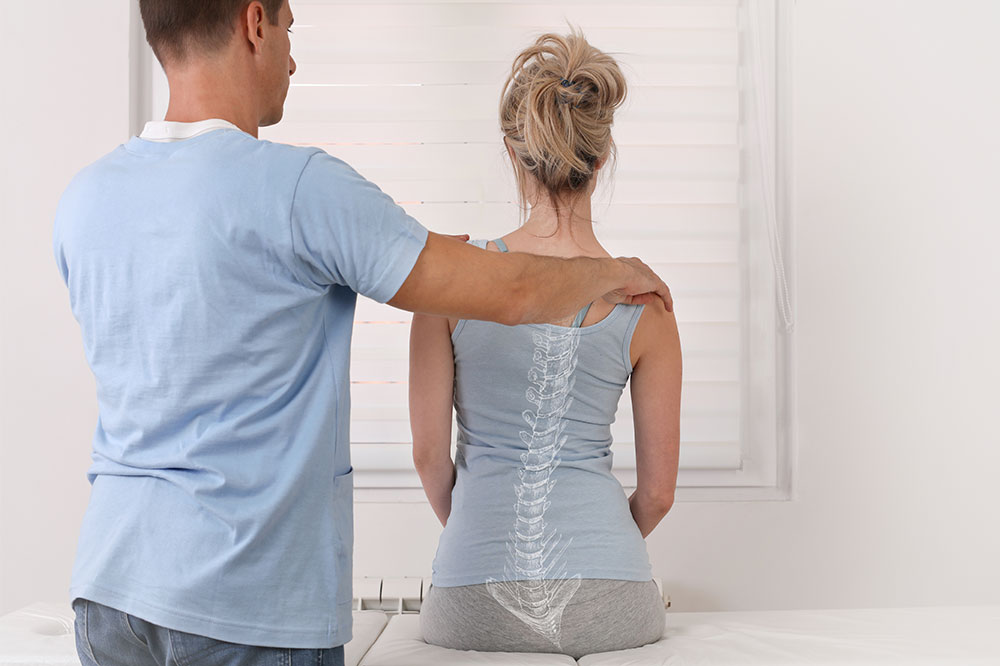Things to Know Before Opting for Non-surgical Spinal Decompression

One does not need to undergo complicated procedures to treat chronic back or sciatic nerve pain brought on by herniated or degenerating spinal discs. An effortless and safe alternative therapy called spinal decompression has been helping many fix their back pain non-surgically. The procedure involves simple but effective methods to stretch and realign the spine. This article provides an overview of this therapy, explaining who should opt for it, its types, benefits, and more.
What is spinal decompression therapy?
The spinal column acts as the main support structure of the body. It consists of the vertebrae, ligaments, and disks that help keep it erect and flexible. Any spinal trauma, wear and tear, or compression due to injuries, age, or bad posture can cause severe pain. However, this can be treated through an FDA-approved surgical or non-surgical therapy called spinal decompression. The non-surgical option is quicker. It uses a unique traction table and other motorized equipment to move and stretch the spine in the right place, relieving pain in the back or legs. It also promotes better circulation of spinal fluids, nutrients, and self-healing by providing a supportive environment for bulging, deteriorating, or herniated discs.
What are the types of non-surgical spinal decompression therapies?
Once a doctor has evaluated the severity of the spinal damage and deemed the patient fit to receive the treatment, they develop a personalized schedule and recommend a spinal decompression therapy:
Motorized spinal traction
The patient must lie on a table fully clothed during this procedure. They are then strapped around their abdomen and pelvis and connected to a machine that gently stretches the spine using pulleys or weights. It gradually releases pressure from the spinal discs, relieving pain and other discomforts.
Electrical nerve stimulation
During this therapy, low-voltage electrical charges are released through a tiny device placed on the patient’s skin. The charges work on the affected nerves and trigger points, promoting muscle relaxation.
Spinal decompression therapy ideally never hurts; however, during the session, one will experience light stretching and pressure on the spine.
Who should opt for such non-surgical spinal decompression treatments?
Non-surgical spinal decompression is suitable for those with the following spinal disc conditions:
Degenerative discs
Spinal discs, the rubbery cushions between the bones in the spinal column, act as shock absorbers and help move comfortably. Once these discs wear off due to age or injuries, the bones start to rub against each other. This leads to bone spur growth, tiny bumps that grow off a bone and pinch the spinal nerves.
Bulging discs
Bulging occurs when the spinal discs are forced out of the spinal canal. These discs then press on surrounding nerves.
Herniated discs
A herniated disc occurs when the outer wall of one’s spinal disc breaks and spills some of the soft internal gel onto the adjacent nerves. While all these conditions cause pain and discomfort, herniated discs cause a burning pain that can travel down from the lower back to the legs.
If a person is diagnosed with any of these conditions or experiences stubborn back or neck pain, it is best to consult a doctor immediately. With a detailed analysis, the doctor can decide if one qualifies for this therapy. Those with fractures, severe osteoporosis, another weak bone condition, and a history of serious nerve damage are not advised to undergo this therapy. The same goes for pregnant women and those who have undergone spinal surgery and have metal implants.
How long does the treatment last?
The treatment plan and duration are unique to every patient, based on the doctor’s evaluation. It takes roughly 30 minutes to complete one spinal decompression session. Studies show that, on average, 12 to 20 sessions spread out over four to six weeks produce good results. Patients may feel a lot better after a few sessions, but it is advisable to complete the entire treatment course for long-term pain relief. Sometimes, the doctor may recommend combining non-surgical therapy with other supplementary or holistic treatments. It may include spine stabilizing and core strengthening exercises, ultrasound, and heat or cold therapy, which can all lead to a speedier recovery.
What are the benefits of non-surgical spinal decompression?
Non-surgical treatments offer multiple benefits. They primarily release the pressure in the nerve that causes chronic pain. The best part is that individuals can start noticing a difference in their posture after a few sessions. The treatment is also safe since it promotes natural healing. It poses a lesser risk to one’s body than surgical procedures.
What are the alternatives to non-surgical spinal decompression?
One can also opt for surgical spinal decompression procedures like a diskectomy or osteophyte removal to relieve the pain. These procedures remove a part of the patient’s bone or tissue to ease the pressure on neurological components and involve several days or months of recovery time. If a person does not want to opt for spinal decompression in any form, surgical or non-surgical, a few other effective therapies help relieve back pain. One example is acupuncture. In this therapy, needles are inserted through the skin at different pressure and pain points to stimulate the body’s natural healing ability. Chiropractic care is another treatment for spinal adjustments that realign the bones.
How are spinal problems diagnosed?
Healthcare professionals may run a series of tests to understand a person’s injury and set the best course of action to relieve pain. For instance, bone scans help detect the source of back pain by revealing any fractures, infections, or cancerous cell growth in the bones. Doctors may also use electromyography to study the patient’s nerves and muscles by testing how fast electrical signals pass through them. CT scans, MRIs, and X-rays are diagnostic imaging tests that detect the source of back pain. Diskography is a unique test that uses a screening tool to take a CT scan and show any damage to one’s disk.






